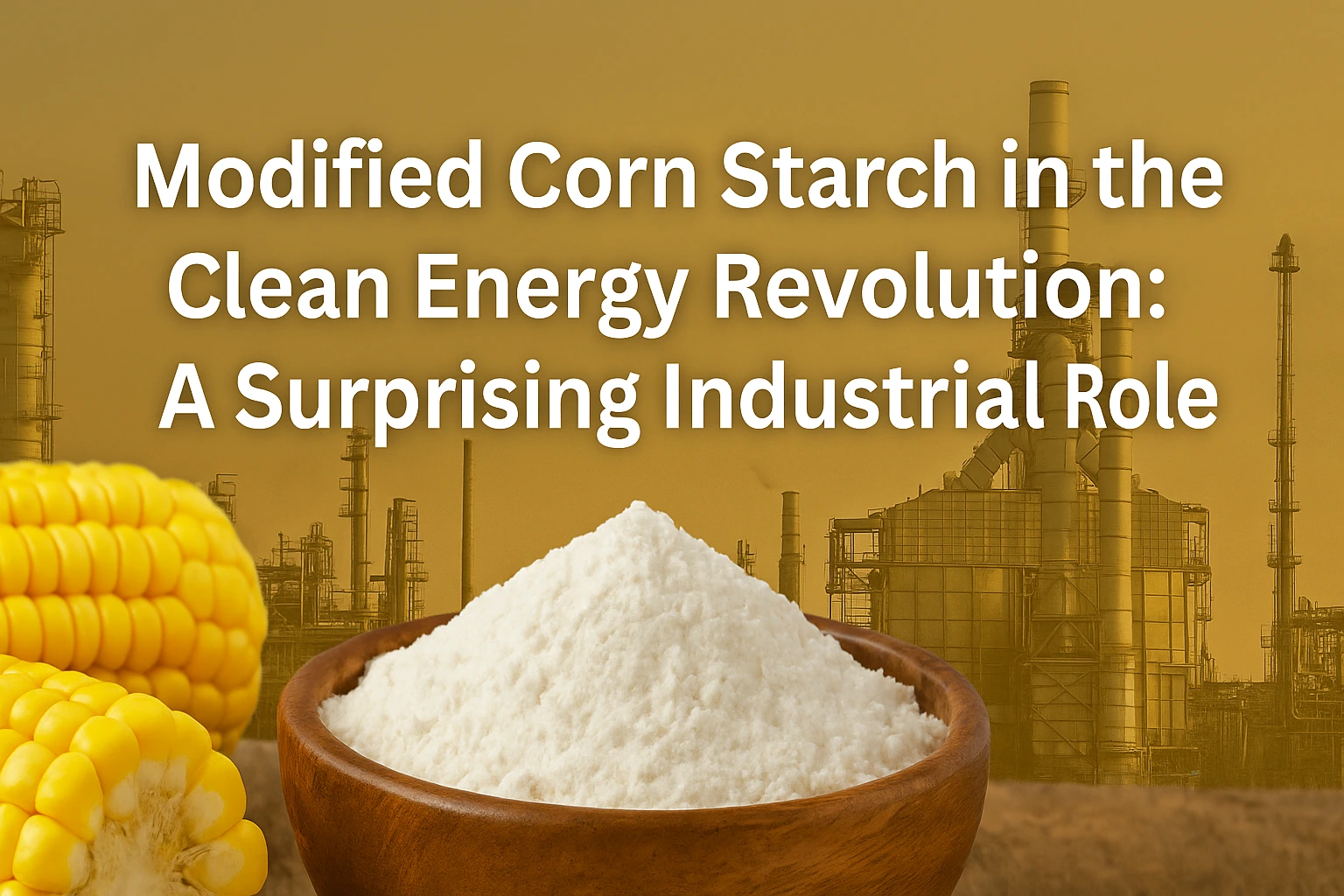Modified Corn Starch in the Clean Energy Revolution: A Surprising Industrial Role

Table of Content
-
Introduction: Rethinking Corn Starch Beyond Food
-
Biofuel, Bioenergy, and Battery Innovation—How Starch Delivers
-
Supply Chains, Leading Suppliers, and Future Industry Impact
-
Challenges, Opportunities, and Sourcing Strategies
-
Conclusion: Why Modified Corn Starch Is a Clean Energy Game-Changer
1. Introduction: Rethinking Corn Starch Beyond Food
Modified corn starch, chemically or physically altered to improve performance, is increasingly seen as a high-impact green material well beyond its traditional food thickener role. As industries set aggressive carbon reduction targets, demand is booming—modified starch is used to make sustainable plastics, improve oil recovery, and, most recently, support the clean energy revolution through innovative chemistry. Fueled by abundant supply, versatility, and bio-based credentials, its industrial adoption is outpacing native starch in 2025.
2. Biofuel, Bioenergy, and Battery Innovation—How Starch Delivers
The energy sector is harnessing modified corn starch in multiple, high-value ways:
-
Biofuel production: Modified starch offers improved fermentable sugar yields for ethanol and butanol, supporting both first- and second-generation biofuels. Genetic and enzymatic starch alterations increase total output and reduce water/energy needs.
-
Battery and supercapacitor materials: Recent studies demonstrate the use of modified starch as binder, film-former, or green matrix in lithium-ion and sodium-ion batteries, boosting energy density and performance while lowering toxicity. Starch-driven composites also support bio-based electrode fabrication.
-
Fuel cell and industrial applications: Modified starch acts as an effective, sustainable thickener in fuel cells and other catalytic systems, and stabilizes emulsions, extending the life cycle of key industrial green processes.
This pivot to clean energy is creating entirely new supplier-buyer ecosystems where performance, renewability, and cost have major procurement advantages.
3. Supply Chains, Leading Suppliers, and Future Industry Impact
Market leaders—Cargill, ADM, Ingredion—are investing in next-gen starch modification for energy, bio-based packaging, and non-food specialty applications. With global supply chains covering food and industrial grades, they assure traceability, certification, and production scale. The $15–25 billion global modified starch market is set to grow at >5% CAGR, with clean tech, plastics, and energy applications as primary drivers.
4. Challenges, Opportunities, and Sourcing Strategies
-
Performance variability: Buyer R&D must match starch modification type to end-use—different esters, ethers, and blends yield diverse results in batteries, films, or biofuels.
-
Cost and feedstock risk: Weather and crop volatility still impact corn-based commodities; rising raw material costs and regional price spikes are ongoing risks.
-
Innovation opportunities: Alternative starch sources (potato, cassava), advanced enzymatic/granulation, and co-product valorization are exciting sourcing frontiers for buyers seeking differentiated industrial performance.
5. Conclusion: Why Modified Corn Starch Is a Clean Energy Game-Changer
As clean energy advances, modified corn starch proves itself a flexible, scalable tool in the industrial green transition. Its technical, ecological, and economic advantages will empower energy innovators and procurement teams to accelerate sustainability through smarter sourcing, strategic partnerships, and supply chain resilience.

Leave a Comment